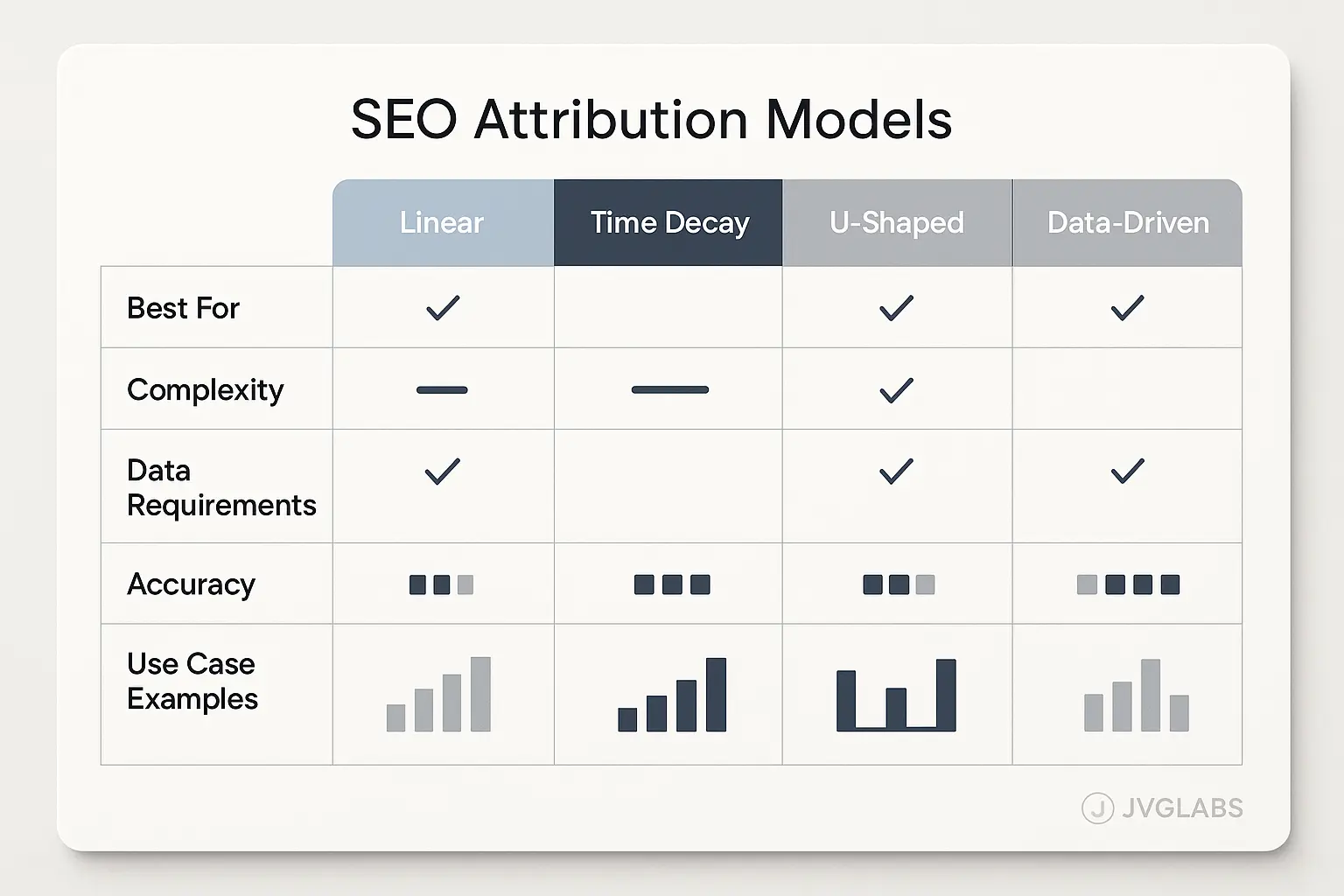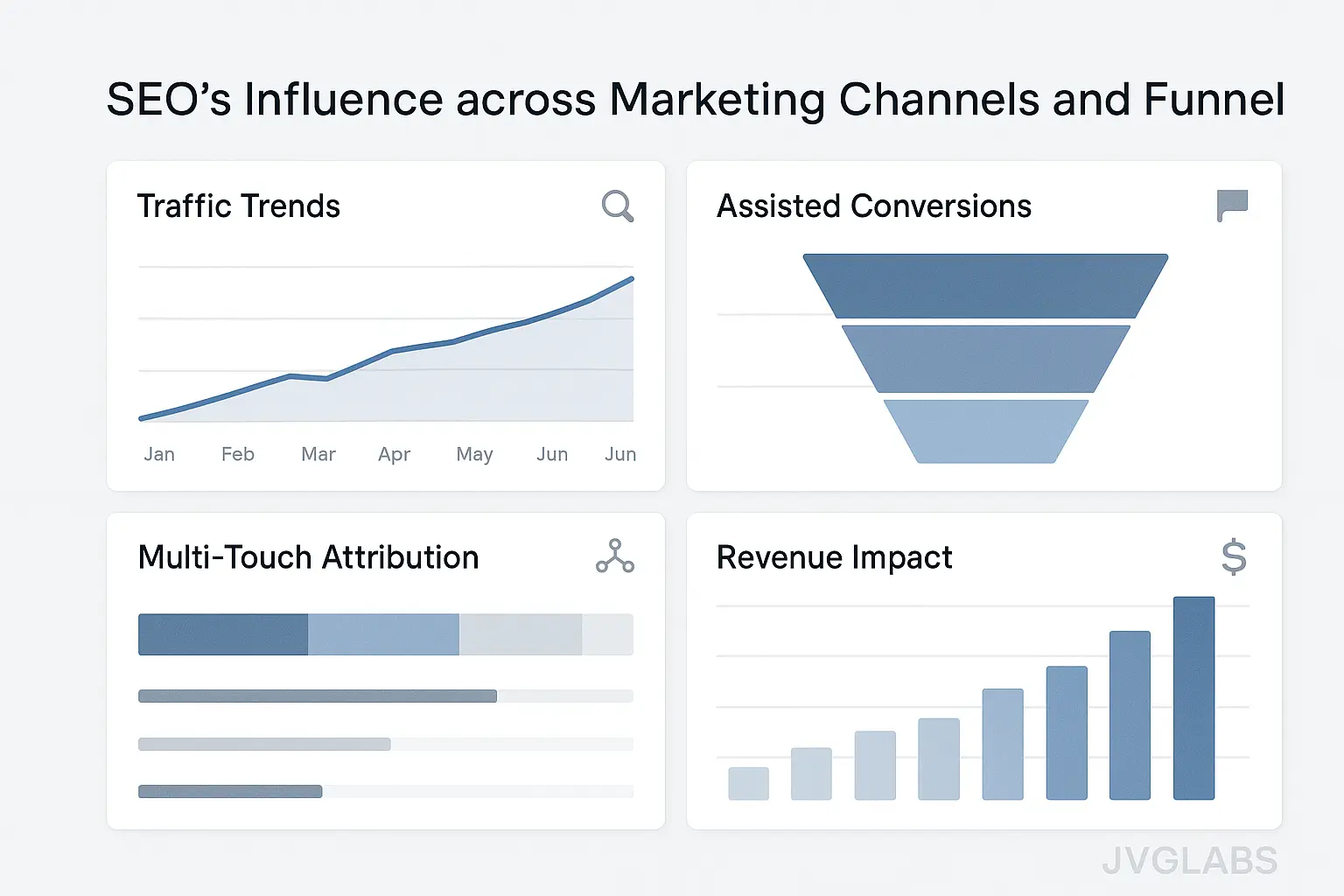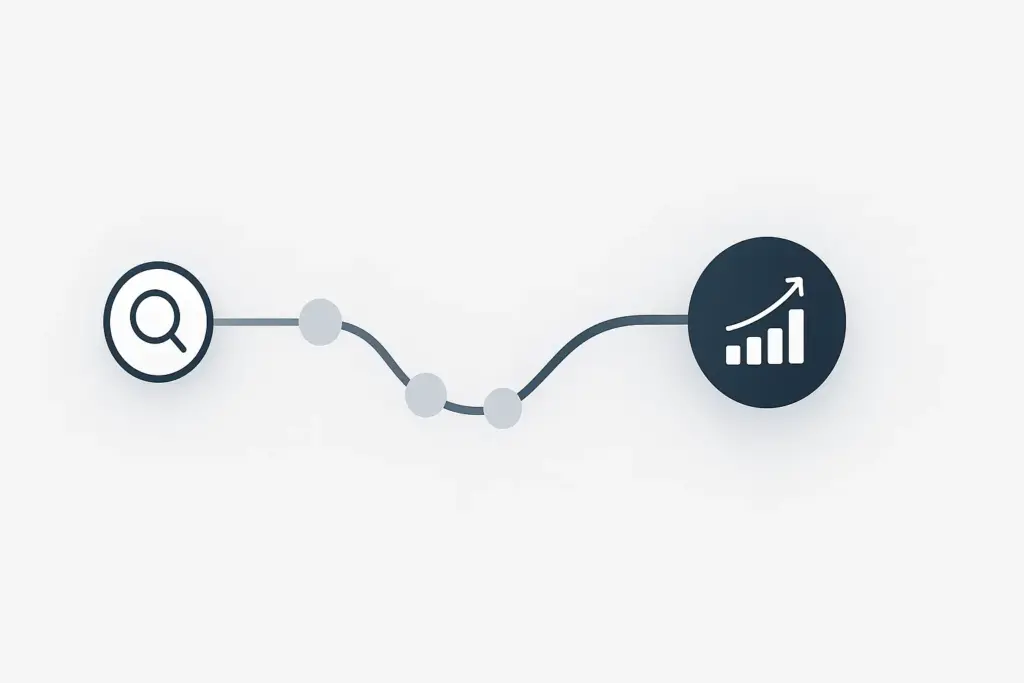Measuring True ROI: An Agency’s Guide to Omnichannel SEO Attribution
Your client just asked the question every agency dreads: “I see the traffic numbers, but how do we know SEO is actually driving sales?”
You pull up your standard report showing keyword rankings and organic sessions, knowing it doesn’t tell the whole story. You know the blog post they found on Google last month influenced the branded search they made last week, which led to the email signup that converted yesterday. But how do you prove it?
This is the classic agency dilemma. In a world of multi-touch customer journeys, relying on last-click attribution is like giving all the credit to the player who scored the final goal while ignoring the assists and defensive plays that made it possible.
In fact, a staggering 77% of marketers are unsure or believe their current attribution models are inadequate. They know there’s a disconnect.
For agencies, solving this attribution puzzle isn’t just a reporting upgrade—it’s the key to demonstrating undeniable value, retaining clients long-term, and evolving from a service provider to a strategic growth partner. This guide will give you the framework to do just that.
What is Omnichannel SEO Attribution? (And Why Your Clients Need It)
Omnichannel SEO attribution is a way of measuring SEO’s impact not as an isolated channel, but as an integral part of the entire customer journey. It moves beyond “which channel got the last click?” to answer a much more valuable question: “How did all our channels, including SEO, work together to create this customer?”
Think of a successful marketing campaign as a championship sports team. Last-click attribution gives the MVP trophy only to the player who scored the winning point. Omnichannel attribution, on the other hand, analyzes the entire game—crediting the defender who created a turnover, the midfielder who made the crucial pass, and the forward who assisted the final shot.

SEO is often the player that starts the play or makes a key pass in the middle of the field. It drives initial awareness, educates prospects during their research, and builds the brand authority that influences a final purchase decision, even if that purchase happens through another channel.
When clients see this, the conversation changes. It’s no longer just about rankings; it’s about business impact. The data backs this up: omnichannel campaigns are 1.5x more persuasive and 1.7x more memorable than single-channel efforts. By showing how SEO fuels this ecosystem, you’re not just reporting on data—you’re telling a compelling story of growth.
Choosing Your Attribution Model: A Framework for Agencies
The first step is moving beyond the default last-click model. But which model is right for your client? While several options exist, the key is choosing one that reflects their unique business cycle and sales process. With platforms like GA4 deprecating older models, the trend is shifting toward more intelligent, algorithm-based approaches.
Here’s a simple framework to guide your decision:
Linear
- How It Works: Gives equal credit to every touchpoint in the journey.
- Best For: B2B clients with long sales cycles and multiple decision-makers.
- Why It’s a Step Up: Recognizes the value of early and mid-funnel interactions.
Time Decay
- How It Works: Gives more credit to touchpoints closer to the conversion.
- Best For: Businesses with shorter, consideration-heavy sales cycles (e.g., high-value B2C).
- Why It’s a Step Up: Values the interactions that directly preceded the final decision.
Position-Based (U-Shaped)
- How It Works: Gives 40% credit to the first touch, 40% to the last touch, and splits 20% among the middle touches.
- Best For: Businesses focused on both lead generation (first touch) and closing (last touch).
- Why It’s a Step Up: Balances the importance of awareness and conversion channels.
Data-Driven (DDA)
- How It Works: Uses machine learning to analyze all touchpoints and assign credit based on actual contribution to conversions.
- Best For: Businesses with sufficient conversion data for the algorithm to learn from (GA4’s standard).
- Why It’s a Step Up: The most accurate model, as it removes guesswork and adapts to user behavior.
The emerging standard for 2024 is Data-Driven Attribution (DDA). It’s the default in GA4 for a reason: it uses your actual data to build a custom model, delivering the most sophisticated and defensible view of performance.
The Tech Stack: Integrating SEO, CRM, and Analytics
To make any attribution model work, you need trustworthy data. This is often where agencies hit a wall. Your data can’t live in silos; SEO performance from Google Search Console is meaningless without conversion data from your client’s CRM.
Accurate omnichannel attribution requires seamless integration between your core platforms. At a minimum, this means connecting your client’s website analytics (like GA4) with their CRM (like Salesforce or HubSpot) and advertising platforms. This creates a single source of truth that tracks a user from their first anonymous Google search to their final status as a paying customer.

This integrated stack is the foundation of modern reporting. It allows you to track metrics like:
- Assisted Conversions: How many sales did organic search contribute to, even if it wasn’t the last click?
- First-Touch Attribution: How many new customers began their journey with your client because of an SEO-driven piece of content?
- Lead-to-Close Rate by Channel: Are leads from organic search more qualified and more likely to close than those from other channels?
Building this technical foundation can seem daunting, but it’s non-negotiable for proving your value. It’s the difference between sharing vanity metrics and demonstrating how your white-label SEO execution directly impacts revenue.
Building the Holistic Dashboard: Visualizing SEO’s Full-Funnel Impact
Once your data is integrated, the next step is presenting it in a way clients can instantly understand. Ditch the 20-page PDF of keyword rankings and build a single, holistic dashboard that tells a clear story.

This dashboard should be the centerpiece of your client meetings, visualizing SEO’s influence across the entire funnel and connecting your tactical efforts to their strategic goals.
Key Components of a Holistic Dashboard:
Top-of-Funnel (Awareness):
- Organic Visibility & Share of Voice
- Organic Sessions (New vs. Returning)
- Top-Performing Informational Content
Middle-of-Funnel (Consideration):
- Organic-Assisted Conversions
- Goal Completions (e.g., newsletter signups, demo requests) originating from organic traffic
- First-Touch Attribution by Organic Content
Bottom-of-Funnel (Decision):
- Last-Click Organic Conversions
- Organic Influence on Branded Search Volume
- Revenue/Deal Value Attributed to Organic Leads (from CRM)
Cross-Channel Impact:
- A chart showing how organic traffic contributes to conversions across different attribution models (e.g., Linear vs. Last-Click).
- Correlation between SEO content efforts and paid search campaign performance.
A dashboard like this, powered by AI-powered SEO automation in the background, frees you up to focus on delivering strategic insights, not just data points.
Communicating Value: A 3-Step Framework for Client Conversations
Having the right data is only half the battle. You also have to communicate its meaning in a way that resonates with business owners, not just marketers. Avoid getting lost in technical jargon about attribution models. Instead, use a simple framework to guide your client conversations.
The 3-Step Framework:
-
Set the Stage (The “Why”): Start by reminding them of their customer’s complex journey.
Sample Script: “We know your customers don’t just wake up and decide to buy. They do research, read articles, and compare options over time. Our goal with this report is to show how our SEO efforts influence them at every step of that journey, not just on the final click.” -
Tell the Story (The “How”): Use the holistic dashboard to walk them through the funnel, connecting your activities to their results.
Sample Script: “You can see here how the blog post we published in January brought in 800 new users. Our data shows that 50 of them later came back directly to the site to request a demo. That’s a clear example of SEO planting the seed that grows into a qualified lead.” -
Connect to Goals (The “What”): Bring everything back to their core business objectives—revenue, leads, and customer acquisition cost.
Sample Script: “By attributing revenue across the whole journey, we can see that organic search influenced over $75,000 in sales last quarter, even though it was the ‘last click’ for only $30,000. This shows the true ROI is more than double what last-click models suggest, making your SEO investment incredibly efficient.”
This approach transforms your reporting meetings from tactical updates into strategic consultations, reinforcing your value as an indispensable partner.
From SEO Provider to Strategic Growth Partner
Adopting an omnichannel attribution mindset is more than a technical shift; it’s a strategic evolution for your agency. By moving beyond last-click metrics, you stop defending the value of SEO and start demonstrating its central role in your clients’ growth.
You provide the clarity they crave, answer their toughest questions with confidence, and prove that your work is a critical investment, not an expense. This is how you build unbreakable client relationships and create a powerful competitive advantage that lets your agency scale profitably. You become the partner who connects the dots—and that’s a partner no client wants to lose.

Frequently Asked Questions
-
Is omnichannel attribution too complicated for my clients to understand?
It’s all in the presentation. Instead of focusing on technical model names, use analogies (like the sports team example) and guide the conversation toward the story the data tells about their customers. Your job is to translate complex data into simple business insights. -
Do I need a data scientist on my team to implement this?
No. While the backend can be complex, the key is having the right integrated platform and a partner who can manage the data infrastructure. This allows your team to focus on strategy and communication, not data engineering. The goal is to leverage automation and expertise so you can deliver sophisticated insights without needing a dedicated data science department. -
What tools are essential for getting started?
The core stack is a modern analytics platform like Google Analytics 4 (which has a native Data-Driven Attribution model), integration with your client’s CRM (e.g., Salesforce, HubSpot), and Google Search Console. The magic happens when these tools are connected and feed data into a centralized reporting dashboard. -
How much data do I need for a Data-Driven Attribution model to be effective?
According to Google, GA4 needs at least 3,000 user interactions and 300 conversions within a 30-day period for the DDA model to be properly trained. For clients below this threshold, a rules-based model like Linear or Position-Based is a great starting point. -
How does this approach impact client retention?
Dramatically. When clients can clearly see how SEO assists sales and generates qualified leads throughout the funnel, the conversation shifts from cost to investment. You are no longer just “the SEO agency”; you are the strategic partner providing the roadmap for growth. This deepens trust and makes your services indispensable.

